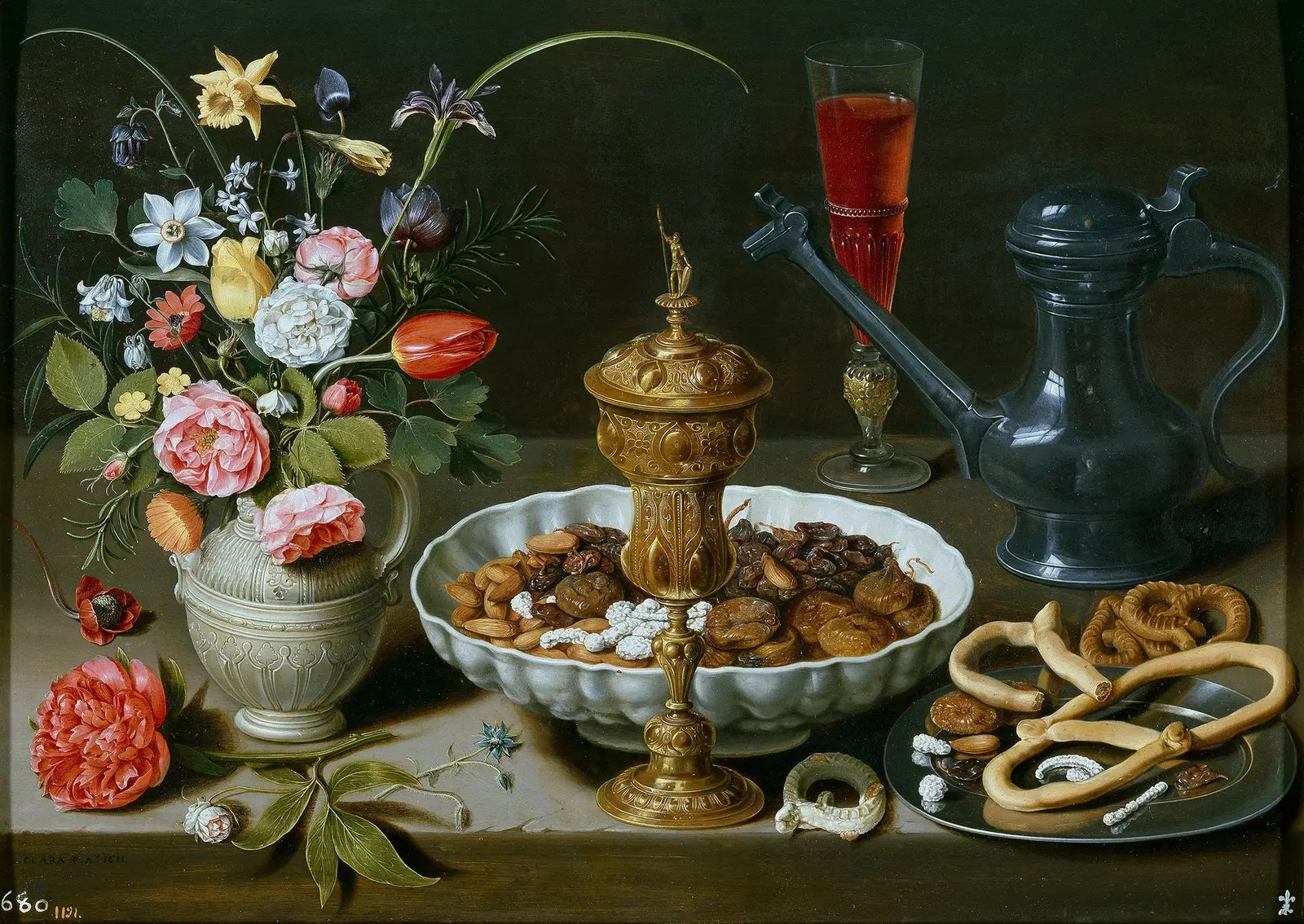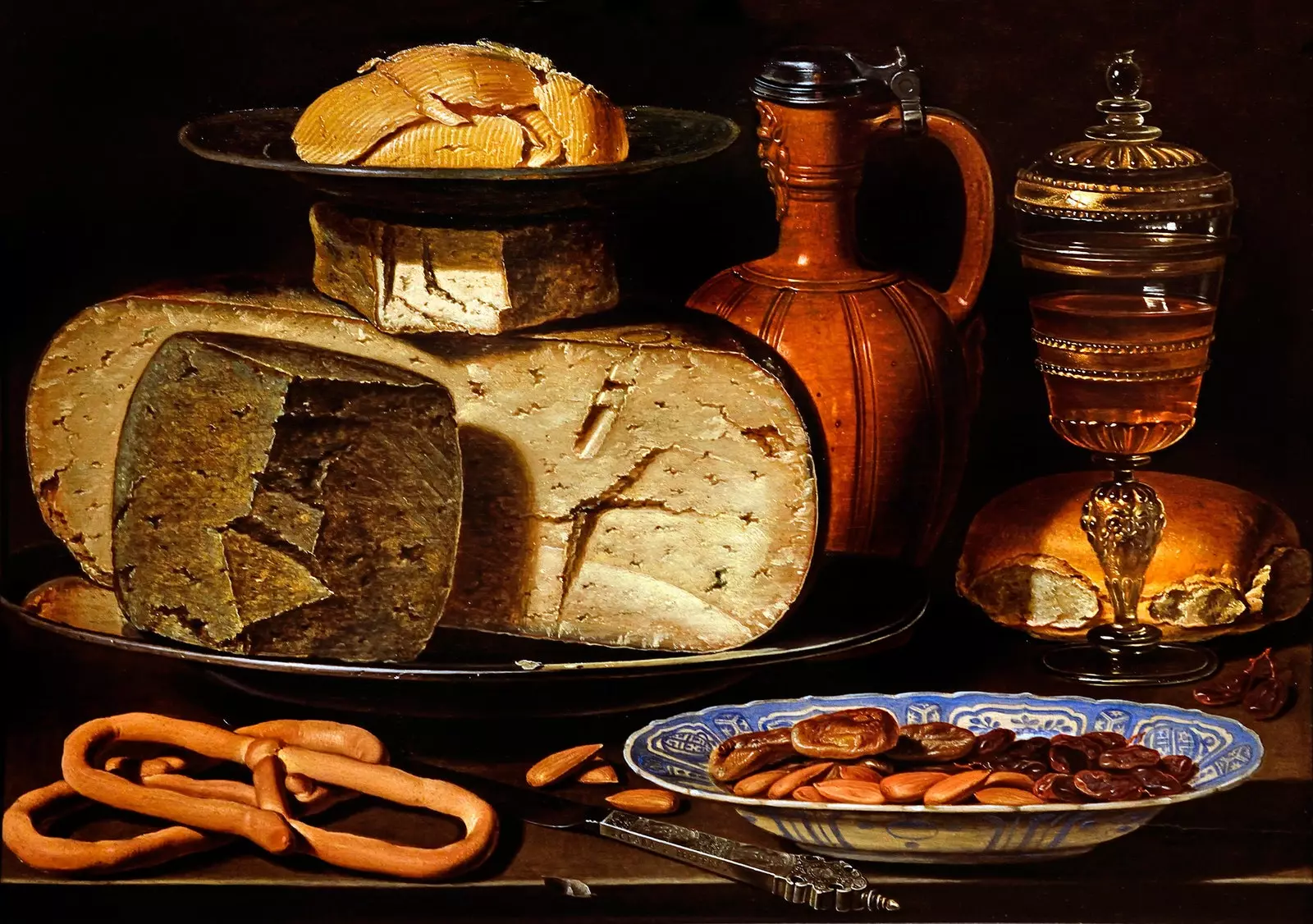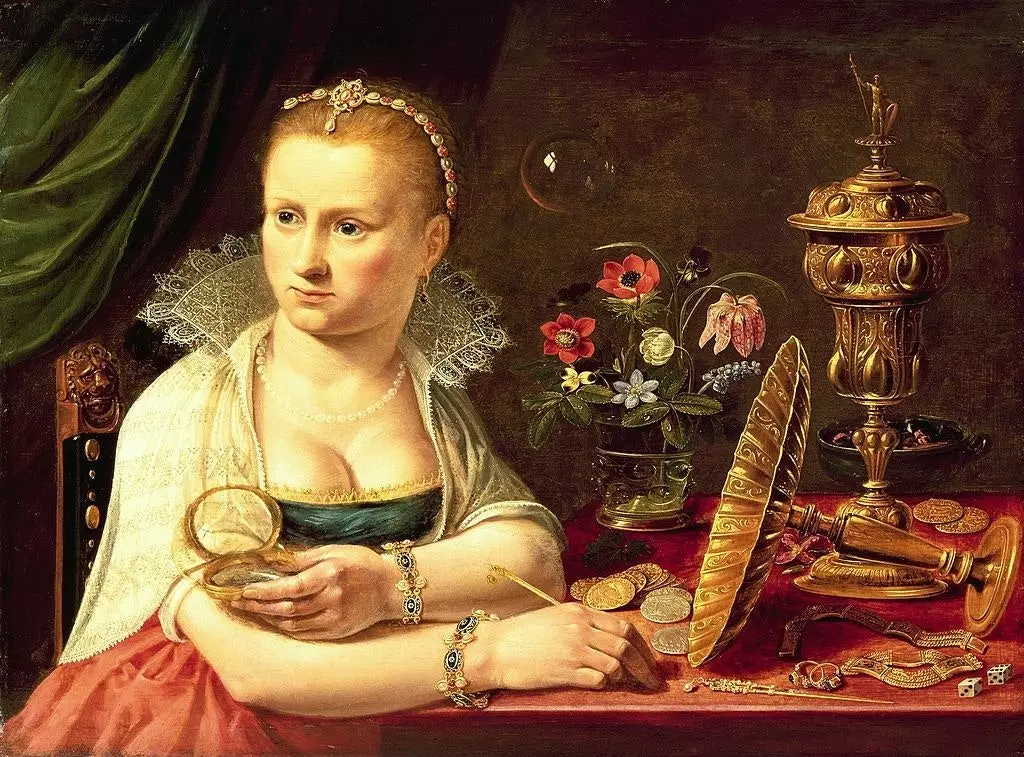
'Still Life with Flowers', by Clara Peeters
Still lifes offer a window into the geography of objects. The landscape acquires meaning in the harmony between glass and ceramics , daffodils and peonies, rosé wine and sugar.
Clara Peters cultivated a sober staging. We do not know anything about her biography except that she worked in Antwerp during the first half of the seventeenth century. the silver knife with her name appearing on some of her images indicates that she was married. It used to be a wedding gift.
She used this cutlery as a signature . The awareness of her, not only as an artist, but as a woman artist, led him to introduce her portrait in her works. In this still life in the Prado Museum, in addition to the inscription carved on the side of the table, Clara appears in seven mirror-like reflections.

Example of the silver knife with which she signed her works
The women who accessed painting, or they were the daughters of a relevant artist , in which case they had access to a workshop and a clientele, or they enjoyed a position that allowed them to hire the services of a tutor . Her practice was subject to the limits of the domestic . This condition excluded essential areas of learning, such as anatomical drawing from nude models.
"If the artist is not an expert in figures and stories, he can paint animals, kitchens, fruits, flowers", suggested the painter and historian Karel van Mander. Francisco Pacheco, teacher of Velázquez , he stated that “it was easier to represent dead fish and birds than alive, because of the need to make the movements of the latter appear natural.”
The still life, considered a secondary genre, allowed the absence of models and did not require inappropriate contacts . Peeters pushed through the competition and created a thriving workshop. Her works were acquired by one of the greatest collectors in Flanders, the Marquis of Leganés, and reached the Spanish royal collection.
From today's perspective, it is difficult to assess the innovation that realism represented in the representation of objects. In the Renaissance, the idea was the center of creation. Naturalism was born in the 17th century as a way of bringing the observer closer to everyday life , even from the vulgar.
This way of seeing acquired a new meaning in still lifes. In some cases the intention to show the expiration of the ephemeral is evident: flowers wither, meat rots . Everything is vanity. However, both in the case of Clara Peters as in many of her contemporaries, reality imposes itself beyond, or closer to, its meaning. In her works the matter is affirmed. A matter that is desirable in itself.
Only the nobility and the upper bourgeoisie had access to the pieces that appear in the image of the Prado Museum. The Siegburg earthenware vase, the silver-gilt cup, the Faenza fountain, the pewter (tin-copper-lead alloy) pitcher and plate, and the cup imitating Venetian models were luxury products. Sugar was not available to the humble class . Raisins, dried figs, and almonds were imported from Spain. The dominant power imposed fashion both in clothing and at the table.
The scene takes us to the dessert that closes the lunch of a prosperous Antwerp merchant. Sobriety enhances the brilliance of gilded silver and glass. A nibbled pretzel marks the moment.
Peeters inserts her self-portrait as a token of her virtuosity . The painter appears reflected in four points of the pewter tankard and in the three ovals of the golden cup. She is dressed in the urban way: with a lace collar and a headdress. In her hand, a palette, perhaps a brush.

Possible self-portrait of Clara Peeters
